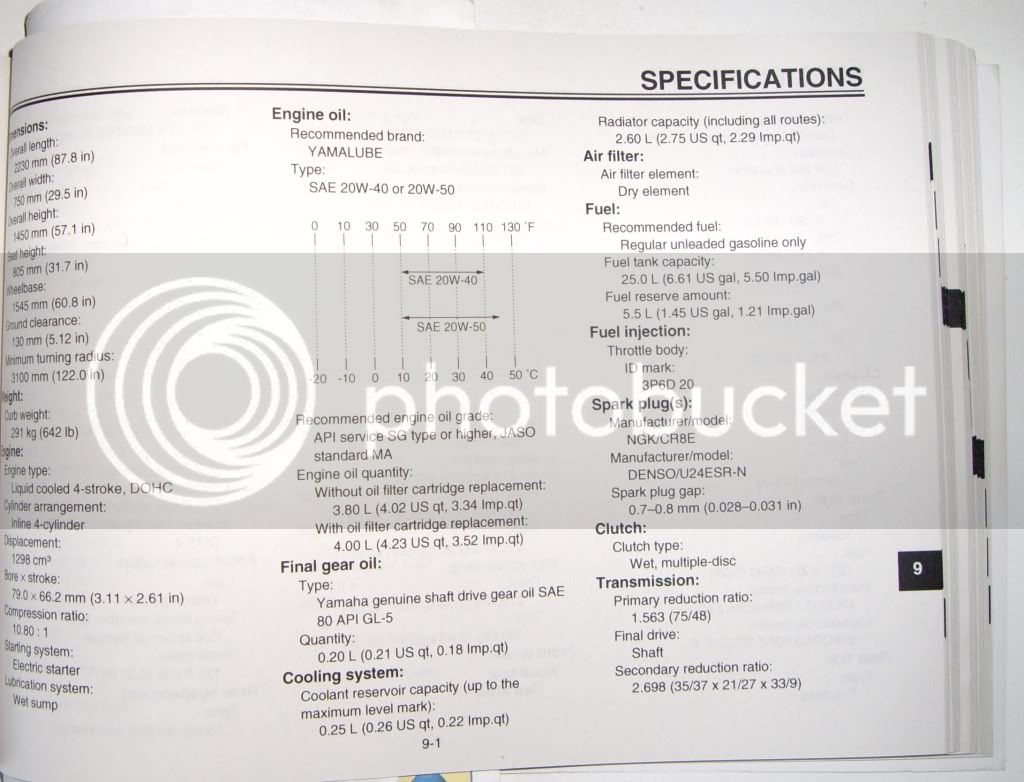user 28727
Member
- Joined
- Apr 7, 2012
- Messages
- 8
- Reaction score
- 0
I stopped by my local dealer in Frederick, MD to get oil and filter and was told Yamaha no longer makes or recommends 20w-40 oil for the FJR.
The guy told me that 10w-40 is all that Yamaha is now recommending and they will no longer make the 20w-40 oil. I don't mind using this for my winter riding but it sure sounds like BS to me. Has anyone else heard about this?
Thanks,
Keith
Its true.
It was phased out within the last year or so. 10W40 would be the logical replacement spec since it would have the same properties at high temps, and would favorable properties at lower temps compared to the 20W40.
I asked Gerald at D&H about this last summer. At first he thought it was still available, but when he checked, he said it wasn't.
I just bought a new 2012FJR on July 30 2012, and I do not understand why 20w-40 is still listed in the owners manual as the recommended oil. Looks to me like this has been going on for 4-5 years. I think it would be hard to sell something that isn't made any more. 2 different dealers told me to run 10w-40. So I called Yamaha customer service and after providing info I was put on hold, and after too long on hold for me, I hung up without an answer--16 minute phone call. I wanted them to send me in writing that my warranty would still be valid if I ran 10w-40.
The guy told me that 10w-40 is all that Yamaha is now recommending and they will no longer make the 20w-40 oil. I don't mind using this for my winter riding but it sure sounds like BS to me. Has anyone else heard about this?
Thanks,
Keith
Its true.
It was phased out within the last year or so. 10W40 would be the logical replacement spec since it would have the same properties at high temps, and would favorable properties at lower temps compared to the 20W40.
I asked Gerald at D&H about this last summer. At first he thought it was still available, but when he checked, he said it wasn't.
I just bought a new 2012FJR on July 30 2012, and I do not understand why 20w-40 is still listed in the owners manual as the recommended oil. Looks to me like this has been going on for 4-5 years. I think it would be hard to sell something that isn't made any more. 2 different dealers told me to run 10w-40. So I called Yamaha customer service and after providing info I was put on hold, and after too long on hold for me, I hung up without an answer--16 minute phone call. I wanted them to send me in writing that my warranty would still be valid if I ran 10w-40.
Last edited by a moderator:


































